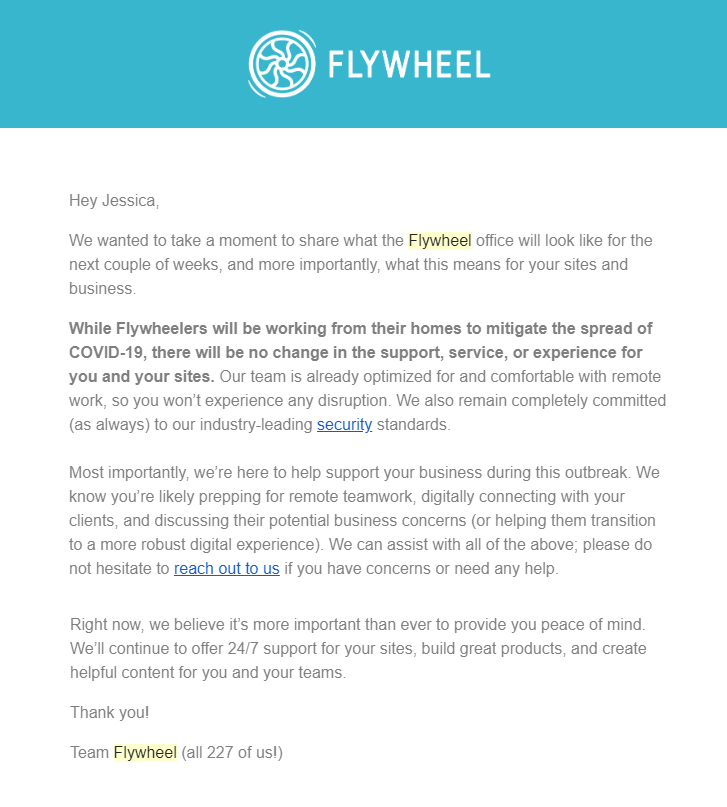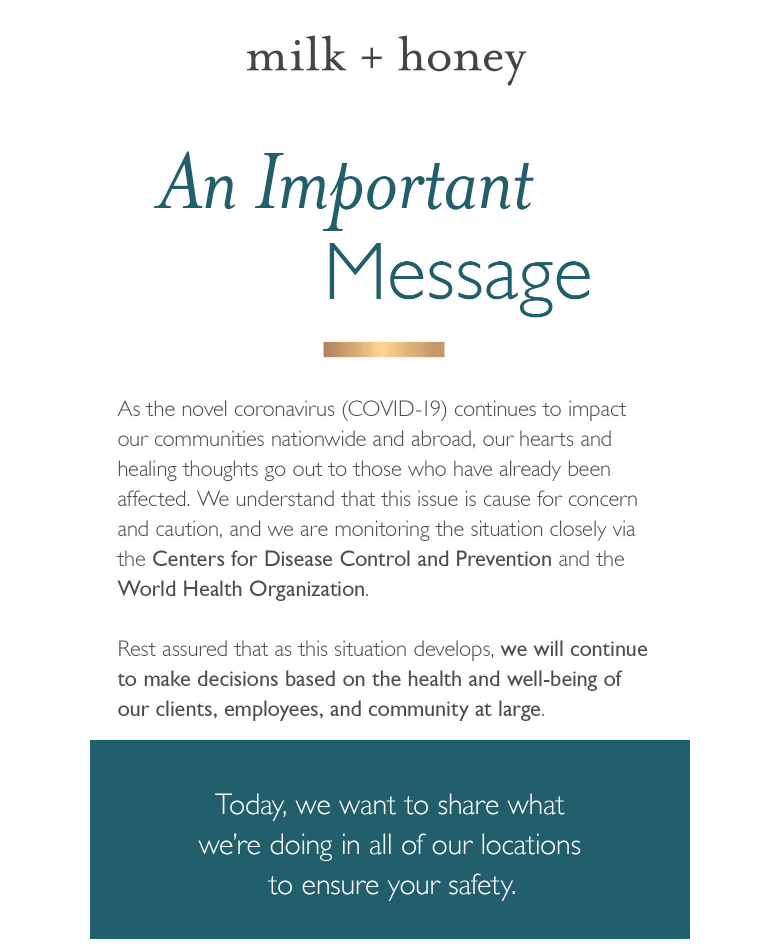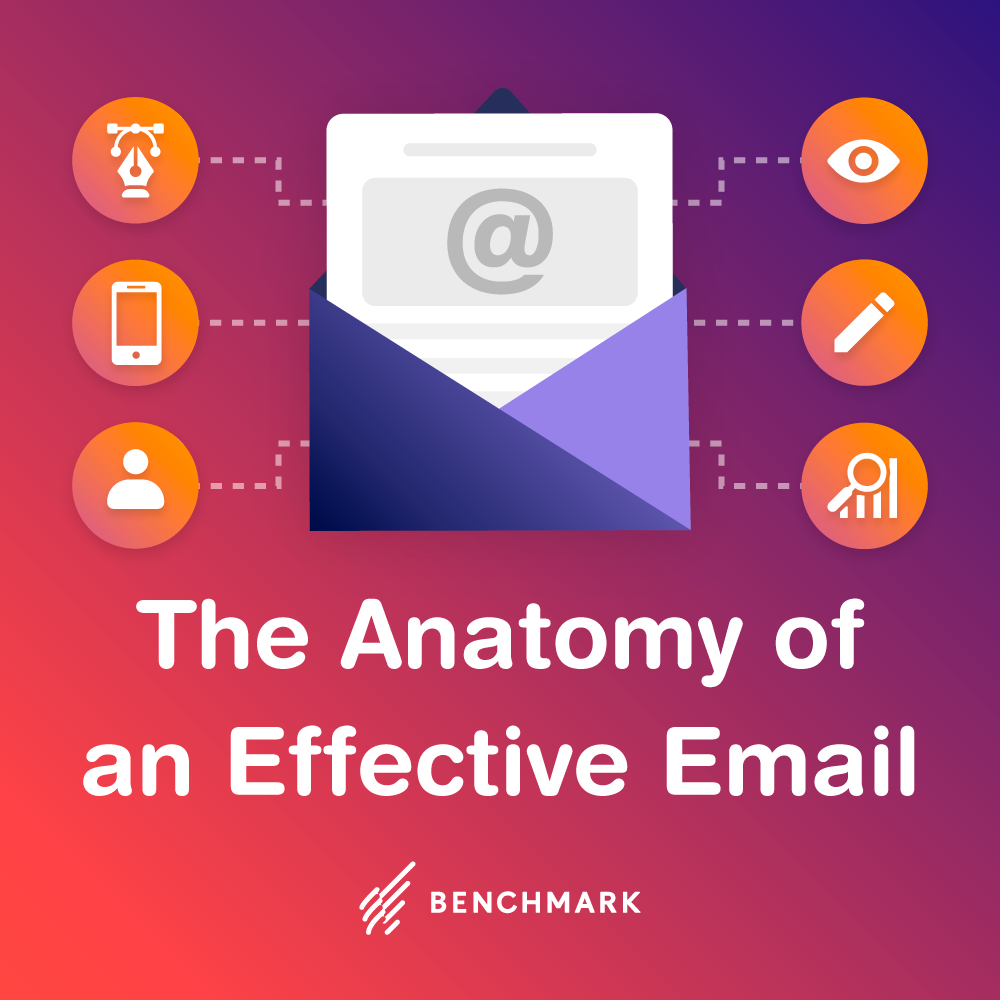COVID-19: 6 Ways Email Marketing Can Help in Dealing With the Consequences
March 16, 2020 5 min read
Our world is going through a very trying time right now. Our hearts go out to each and every person out there dealing with COVID-19 and its repercussions.
Please know that while our team is working from home to do our part to help mitigate the spread, our availability and service to our customers remains the same. We’re here for you to help with anything regarding our product; all you have to do is send an email to support@benchmarkemail.com or call.
We realize there are a lot of businesses out there who, like us, are finding themselves in uncharted territory right now. We’re all being forced to adopt measures we never believed possible, and clear and direct communication has grown essential in a jungle of fake news and social media noise.
Email marketing is a direct and measurable medium, making it stand out among other messages and content. It allows companies and organizations to manage the way they’ll be handling the effects of this deep crisis, and maintain transparency with their customers.
Six Ways Email Marketing Helps Your Business Deal With the Consequences of COVID-19
1. Maintain Transparency
Sending an email to your customers allows you to maintain transparency about how your business is dealing with the situation. In your email outreach, you can include any specific details about what your company is doing to prepare and how you’ll continue to support your customers.
Your customers appreciate transparency, especially in times like this. It assures them that no matter what, you’ll be doing all you can for them, which will alleviate some of the concern and anxiety they’re currently experiencing.
Take Flywheel’s email as a great example of how to inform your customers during this time:
2. Provide Special Measures
Everyone, especially town halls and councils, has to do their part to adhere to strict measures to control the virus. News broadcasts, radio and podcasts, and social media platforms are doing a solid job of spreading the word. Still, there’s also a lot of misinformation out there, and those outlets are all competing for our attention.
By sending an email, you’re able to address customers one-on-one, and it’s more likely that you’ll have their full attention. They can even go back to the email for more details or share it with others.
Here are some examples of instances in which these kinds of emails make sense:
- The regional health service is making recommendations and providing a hotline for citizens to call and seek advice.
- A gym is only allowing a certain number of people to use the facility and is requiring specific hygiene protocols.
- An educational institution is informing students that it’s safe to attend classes due to specific cleaning measures they’re taking.
Their email doesn’t lead with something that would cause readers to get agitated or fearful. It uses calm language, indicating that yes, this is a cautious time, but that they will be making decisions based on the health and well-being of their employees, clients, and community.
3. Communicate Changes
If you’re a B2C business, a storefront, or an event venue, you may be faced with changing your business hours, canceling events, or closing altogether for the time being. Peoples’ health, including your own, is the most important thing right now. The last thing you want to do is continue to encourage interaction when that is what isn’t being advised. If temporarily closing your doors is something you need to do, then definitely alert your customers via email as soon as possible, so they’re completely in the know, and they don’t show up only to be disappointed.
Some specific examples of changes include:
- A theatre postponing some concerts and therefore informing ticket holders about new dates.
- A restaurant staying open during the morning but closing after lunch.
- A gym that has canceled all group classes and is only permitting individual use of the facility.
4. Offer Services at a Distance
When deciding to close down temporarily, you can stay in touch with customers by sending email campaigns that offer some kind of alternative to your services. Perhaps you’ve found a way for your product to be used from home until everyone is back to the usual routine.
Some examples include:
- A class offering students to attend via video conference.
- Closed schools providing recommendations and educational content for parents.
- A gym sending daily workout videos so members can workout from home.
5. Promote eCommerce Alternatives
We’ve all seen the images of empty supermarkets and deserted shopping streets. eCommerce businesses are suffering, and email marketing tactics can definitely help boost sales. Send an email offer with a discount for those who shop online. Or, notify your subscribers that there’s a way for their goods to be delivered to them if they purchase online. This will help you continue making revenue while your doors are closed and stay top-of-mind with customers who would normally do business with you in person.
Some additional examples:
- A small shop or boutique putting all its products online so customers can shop from home.
- A restaurant offering free delivery if customers order through the email or fill out a form.
- A supermarket offering to deliver your groceries for you if you order online or by email.
6. Communicate Internally
Many companies have resisted letting their employees work remotely but are now obligated to close their offices. If a team is not used to working from home, this can provide some difficulties in the beginning. Messaging services and video conferencing will be necessary tools, but don’t forget to keep everyone on the same page by sending out regular updates via email.
Some examples of what to communicate to your team:
- All COVID-19 related changes.
- Specific reporting that certain teams need for their department.
- If your CEO wants to send regular video messages via email to employees.
Additional Tips to Keep In Mind:
As we all navigate through this, here are some other tips to keep in mind that can help your business and communication with your customers.
-
Evaluate Your Ad Spend
If you’re worried about spending money when not as much is coming in, look at your ad spend and make adjustments. With “social distancing,” the economy is going to feel the results. Spend will go down, which means your spending may have to go down as well. Don’t be afraid to look at your budgets and make the necessary cuts.
With that said, keep in mind that if you nix your ad spend temporarily, it could dry up your lead flow. This can affect success when it comes time to operate as usual and lead to a big game of catch-up.
-
Segment Your Messaging
Each region of the world is experiencing a different reality of the virus, so be mindful of that. Use your marketing automation software to easily segment your lists based on the region so you can better personalize your outreach. Consider the situation your contacts are in so that you can reach each segment of your list with the appropriate message.
-
Don’t Incite Fear
Tech leaders have an opportunity to lift up employees and help other businesses as the face of work changes. The brands who put people and marketing first have a great opportunity to shine and weather the storm.
With that said, tensions and anxieties are still high. Don’t feed into them by using language that creates more fear in your audience. Instead, remind them that we’re all in this together.
Take Milk and Honey’s email, for example:
-
Don’t Send Pointless Emails
Don’t send your customers emails just for the sake of acknowledging the outbreak and only because you see other brands doing so. If you don’t have anything compelling or essential to share with your customers about how your company is changing or reacting to the virus, don’t inundate your prospects with an email. Trust me; they’re getting enough emails from other businesses right now, so only create an email if it’s necessary. Otherwise, a blog post and/or social posts will do.
Be safe out there, everyone. And make sure you look out for one another.
Your team at Benchmark






